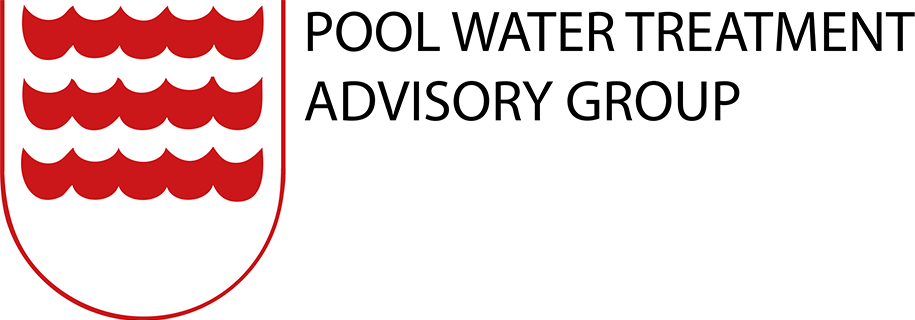PWTAG Technical notes are updates or new material for the standards and guidance given in the PWTAG book, Swimming Pool Water and the PWTAG Code of practice and should be read in association with these publications.
This note provides swimming pool operators with necessary information about Cryptosporidium (the microorganism), cryptosporidiosis (the disease it causes) and measures for their control.
What is Cryptosporidium?
Cryptosporidium is a protozoan parasite that multiplies in the gut of humans and other animals.
The life cycle stage that is shed in faeces is called an oocyst.
People become infected when they swallow oocysts; one single oocyst is enough to make someone ill with cryptosporidiosis.
What is cryptosporidiosis?
Cryptosporidiosis is the illness caused by infection with Cryptosporidium. Anyone can get cryptosporidiosis, but it is especially common in young children. The main symptoms are watery diarrhoea, abdominal pain, nausea and/or vomiting and low-grade fever.
People might swallow oocysts when they have close contact with an infected person or animal and their faeces, or through eating contaminated food, or swallowing contaminated water. Most people become ill five to seven days after ingesting oocysts.
Symptoms usually last up to two weeks, but sometimes longer – and may come and go before full recovery. Some people with very weakened immune systems have serious, possibly life-threatening illness.
How cryptosporidiosis is spread
When people or animals have cryptosporidiosis they shed large numbers of oocysts in their faeces (a million per gram). People may continue to shed oocysts for two weeks after they get better.
- View more about the life cycle of cryptosporidium on the Centres for Disease Control and Prevention website.
How much Cryptosporidium in a contaminated pool?
If someone with cryptosporidiosis infection passes diarrhoea in a swimming pool, this is the maths:
- 1 million oocysts per ml of diarrhoea x 150ml diarrhoea = 150 million oocysts entering the pool
- in a typical 25x12m pool (450m3) that would be an average concentration of 333 oocysts per litre
- it has been estimated that children aged 6-18 years consume 37ml of pool water in a training session, so would swallow 12 oocysts
- 12 oocysts is more than enough to make someone ill.
Chlorine-resistant Cryptosporidium
Cryptosporidium presents difficulties because, unlike most other microorganisms, it is resistant to chlorine disinfection at the levels normally used to treat swimming pool water.
| Chlorine survival* 1mg/L, pH7.5, 25oC | |
|---|---|
| Escherichia coli | <1 min |
| Giardia (another protozoan) | 45 min |
| Cryptosporidium | 10.6 days |
Source: www.cdc.gov
Oocysts will therefore survive in swimming pool water and present an infection risk unless removed by filtration.
Removal of Cryptosporidium
Good filtration – low or medium-rate and with coagulation – is the key to removing oocysts. But not all oocysts will be removed in a single pass of pool water through the filters, however good the pool’s water circulation.
So a number of passes are necessary, and the pool will have to be closed if infestation is suspected so that the water can be circulated through the filters sufficiently to remove the contamination. Secondary disinfection (UV or ozone) also helps, and superchlorination can also be considered.
There is much more detail on all this in three PWTAG technical notes:
Outbreaks of cryptosporidiosis
An outbreak is when more people get cryptosporidiosis than is usually expected. Cryptosporidium is the most common cause of outbreaks of diarrhoea linked to swimming pools.
Cryptosporidiosis outbreaks can happen in other settings, such as open farms where people have contact with animals, or nurseries where children are in close contact with each other, or in communities where drinking water has become contaminated. But swimming pools are the most common setting for outbreaks of cryptosporidiosis.
Preventing cryptosporidiosis
Make sure your pool tells users not to use the pool when they have diarrhoea, or for 48 hours after symptoms stop. If they have had cryptosporidiosis, they must extend that to a fortnight after symptoms stop.
If an outbreak of cryptosporidiosis has been identified, it may be that some regular bathers will have had diarrhoea, but not had the illness diagnosed. They too should be excluded from using the pool for a fortnight after symptoms have stopped.
There are other, important, routine safeguards:
- encourage parents to take children to the toilet before swimming and to offer them frequent toilet breaks
- make sure handwashing and nappy disposal facilities are adequate
- make sure proper swim nappies are used by babies and toddlers
- implement a PWTAG-compliant and clear policy for recognising, reporting and dealing with faecal accidents (see PWTAG’s Technical note on faecal contamination)
Despite these measures, bathers in the vicinity of faecal contamination by someone infected with Cryptosporidium will be at risk if they swallow pool water.
Risks to public health can be minimised by ensuring swimming pool construction, engineering, management, procedures and pool water circulation, treatment and disinfection are optimal and in accordance with current guidelines detailed in PWTAG’s book Swimming Pool Water and Technical Notes.
Mains water contamination
Occasionally water companies are affected by adverse circumstances resulting in an increased risk that Cryptosporidium oocysts get into the water supply.
Water companies may then advise domestic customers to boil water for drinking and food preparation. Generally in a well designed and operated swimming pool – following PWTAG guidelines on turnover, filtration, disinfection etc. – the risk to public health should be low and no special action will be required.
In these circumstances pool operators should also receive advice from the multi-agency incident team, issued via the water company to its business customers. It is particularly important for pools which don’t routinely operate to PWTAG standards to follow this advice.
- Subject: Cryptosporidium – what pool operators need to know
- Date: August 2015
- Download: Technical Note 30 PDF
